Grow tomatoes, they said. It’ll be fun, they said. Growing tomatoes in Florida seems like it’d be a natural, right? After all, it’s sunny nearly all the time and rains quite a bit. Tomatoes love sunshine and water.
Florida is also the home of “Ruskin” tomatoes, named for a small rural town not far from where I live. They’re world-famous, yet somehow, I struggle at growing tomatoes in Florida.
It’s Not the Yield, It’s the Mileage
When I say that I struggle with tomatoes, what I mean is that they’re crazy-making. I get tomatoes. Boy, do I get tomatoes. In fact, last year I got so many tomatoes that my freezer is still filled with ones I failed to find some way to consume.
Here’s the thing: When you’re growing tomatoes in Florida, you can’t count on anything going to plan.
It’s a constant juggling act, filled with an exhausting spraying schedule and fertilizing plan. If you’re not standing in the blistering sun to cover them with shade cloth, you’re standing outside in the cold night air to cover them with fleece.
Between tying and pruning and feeding and spraying, it’s a wonder that I find time to care for my family much less myself. It’s probably a good thing that I waited until my children were grown before I seriously took on growing tomatoes in Florida.
Best Time to Plant Tomatoes
One of the trickiest parts of growing tomatoes in Florida is getting the timing right. Experts say to plant them between August and September for a fall crop – but I’ve found that the heat destroys them when you plant that early. I’ve always ended up nursing them through fungal diseases and plagues of leaf-footed nymphs until a decent drop in the temperature finally saves the day.
At that point, even with the cooler nights that November brings, they’re so ravaged that they don’t recover until well into January before finally producing some tomatoes.
Starting seedlings for another round in November and December means you can plant them out in February – which is another time frame recommended by experts. Many say you should never plant them after February.
The problem is, even in Zone 10a, we still get the occasional cold snap in January and February. Even December can pose a risk. So, be prepared to cover your plants with fleece or some other cloth for those three months.
Growing Tomatoes in Containers
Until recently, I’ve always grown my tomatoes in containers. The nematode problem in Florida is near legendary. So, rather than risk it, I’ve purchased loads of rich potting soil and stuck to pots.
Last year, however, I risked planting Everglades tomatoes in the ground. These tiny berry tomatoes are well-known here in the South for producing in even the worst heat and humidity. They conquered a sunny spot in the backyard and took over until the leaf-footed nymphs invaded and sucked the juice out of each and every tiny tomato.
In a fit of pique, I pulled out every single plant to stop the slaughter once and for all.
The Obvious Contempt of Tomatoes
But this is also where my love-hate relationship with tomatoes truly becomes epic.
This fall, I dutifully planted several varieties into pots with fresh (and expensive) potting soil. I nurtured and fed them. I pruned them weekly. I watered them daily. I kept their little leaves dry and aired.
I planted four separate varieties in pots: Homestead, Beefsteak, San Marzano, and Boomer Cherry.
The damn things became sick from the get-go. Some horrible disease that twisted leaf and stem. Some plague that shriveled their meager fruits. Some microbial bug that stunted their growth.
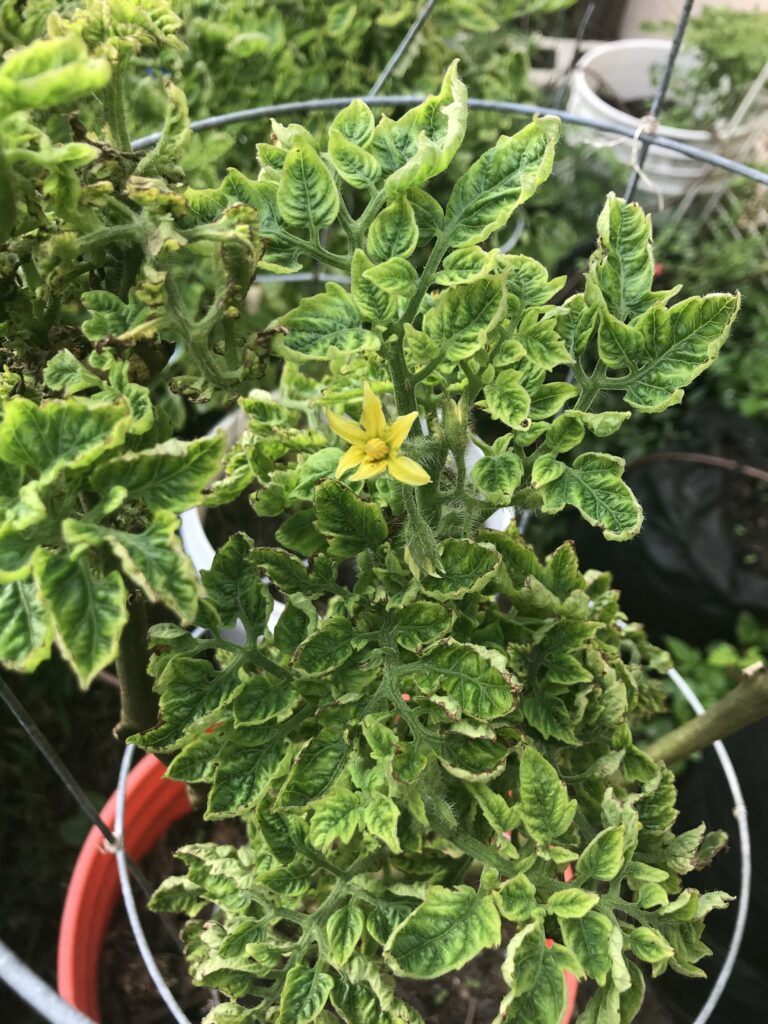
Meanwhile, thirty feet away, volunteers that escaped from our compost tumblers grew lush, wild, tall, strong, and healthy. Without a hint of fusarium wilt. Without a blemish.
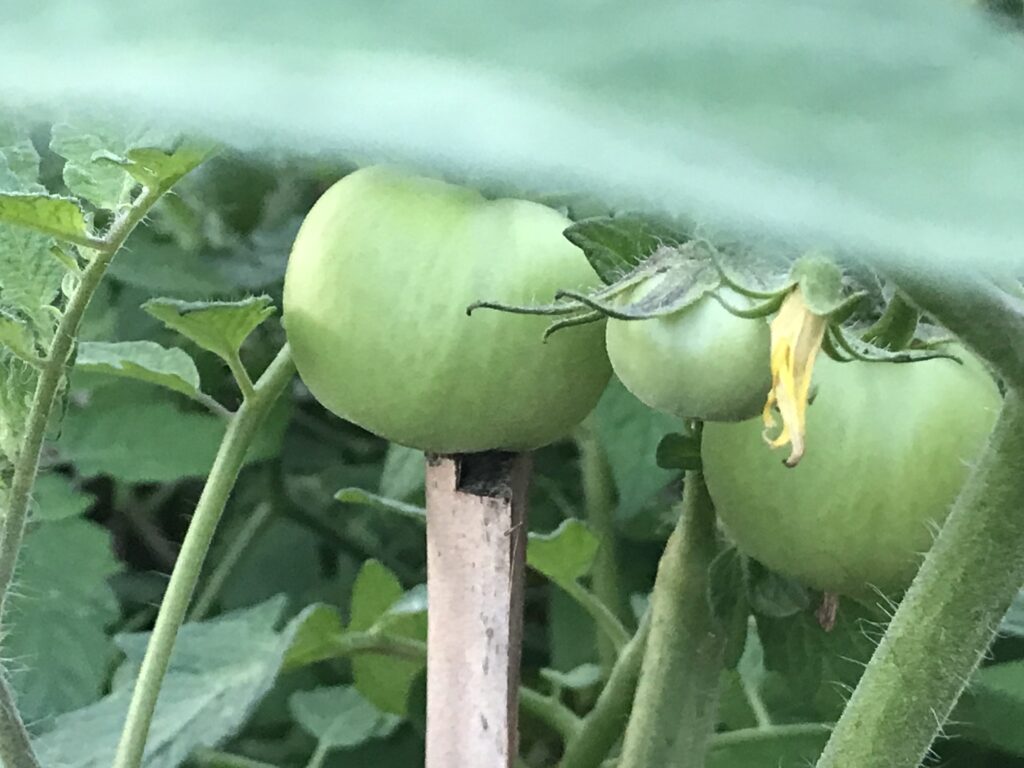
And then to add insult to injury, the three “spare” Homestead seedlings I plunked into a bare spot in a neglected vegetable bed did the same.
The Everglades I planted out in my most productive beds also took off without a hitch and began producing first.
Not, of course, ANY of the ones I carefully planted in pots, exactly per extension office recommendations, and fussed over daily.
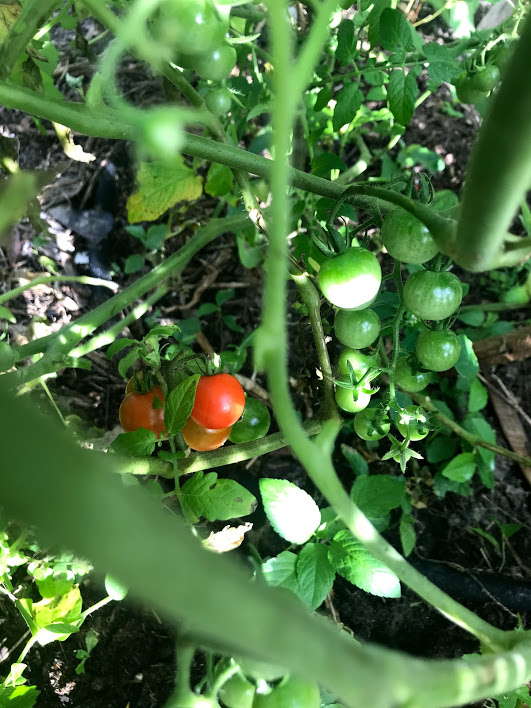
Renewed Dedication
Even with the wet winter we’ve been having, I became complacent. In the interest of keeping organic, I neglected my spraying schedule. After all, my plants were covered in predators like assassin bugs and ladybugs. Wasps buzzed, patrolling for caterpillars.
But no more. A recent declaration of war has put me back on alert.
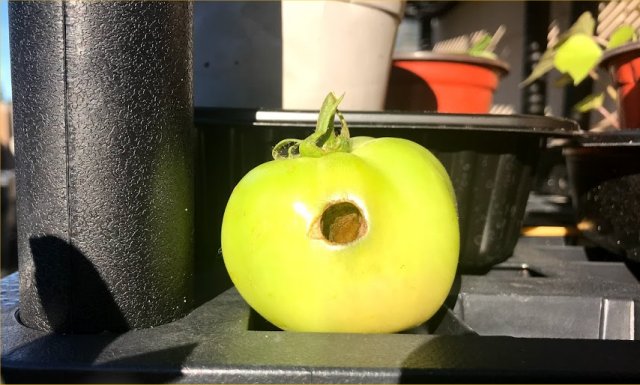
Best Varieties for Growing Tomatoes in Florida
Every year, I look for lists of resistant varieties for planting. What is the best tomato to grow in Florida? But the problem is, I’m pretty cheap. I grow from seeds. I dropped a significant amount of money on seed starting trays and cell cubes. I enjoy planting from seed, and I’m generally pretty good at it. After all, my tomato seedlings grow lush and healthy — at least until I plant them out.
Most of the resistant varieties seem to be hybrids produced by local nurseries, and I’m too cheap to drop $6 on a plant that will surely die within weeks. Especially when I usually grow about 25 to 30 tomato plants.
And most of the stores I frequent don’t carry a wide range of seed types. It’s almost as though growing tomatoes in Florida doesn’t really happen. We get seeds for locations like Ohio or Missouri, and that’s what I’ve been buying. And probably the reason for my love-hate relationship with tomatoes.
I took a risk on some Patio tomato starters and gave two to my mom and kept two for myself. Guess who has gorgeous, healthy, robust Patio tomatoes? It ain’t me.
Many Southern gardeners in Florida are plagued by nematodes, and a lot of research has gone into preventing nematode damage.
My French marigold program seems to have prevented nematode damage, so fungal infections – blight, mosaic virus, and yellow leaf curl seem to be my bane.
In the future, I may simply have to adjust which cultivars I choose when growing tomatoes in Florida. While the Beefsteak tomatoes look delicious in the picture on the seed packet, I may simply have to invest in Cherokee Purple and Brandywine seeds. I’m not sure how well strange-colored tomatoes will go over with the family, but I do know that what I’m doing now isn’t working – at least not when it’s supposed to work.
The state ag offers a list of recommended varieties. They’re the best tomato to grow in Florida, according to experts. But I can’t verify how well they’ll do in a Florida vegetable garden.
Top Cherry Tomatoes
Luckily, cherry tomatoes are pretty heat-tolerant and will grow well through the hot southern summers. A few good disease-resistant varieties to try are:
- Sakura
- Camelia
- Shiren
- Sweeties
Best Berry Tomatoes for Florida
Also called “grape tomatoes,” depending on the size, berry tomatoes do quite well in Florida with good disease resistance and a better tolerance for higher temps. My experience says they’re the best tomato to grow in Florida. If you can find them, try:
- Amai
- Jolly Girls
- Sweet Hearts
And of course, there are Everglades. Everglades grow beautifully with very little effort. Of course, you can’t cut them up and put them on a sandwich — a fact that the spouse points out repeatedly. These tiny tomatoes are cute and full of flavor, but they’re the size of your pinky fingernail.
It’s also difficult to find the seeds commercially. Most Florida gardeners give them away or swap them. The tomatoes themselves are commercially unviable. They burst easily and have no shelf life to speak of. The best way to use Everglades tomatoes is to pick just before adding them to a salad.
Good Round Tomatoes for a Southern Garden
If you prefer slicing tomatoes, like the spouse does, look for heirloom varieties like:
- Brandywine
- Big Zebra
- Cherokee Purple
- Homestead
- Pruden’s Purple
- Striped German
Indeterminate vs. Determinate Tomatoes
Another factor in selecting the right variety when growing tomatoes in Florida is deciding whether to grow determinate or indeterminate tomatoes.
Every gardener on the planet must have seen the picture of the guy standing on a ladder next to his ginormous tomato plant.
And maybe we were a bit envious, and maybe we also felt a bit sorry for him, too. After all, we’re simply slaves to our tomatoes. Cutting, pruning, feeding, tending, worrying. It’s worse than having teenagers.
That’s what you can get with indeterminate tomatoes, though. Those suckers will grow as tall as they can, sprawling and climbing over everything until the first frost puts them down.
So, while the idea of a season of endless tomatoes sounds great in theory, they can eventually exhaust you and themselves. I’ve always struggled with providing a tall enough support for them, and I’ve literally had the spouse tie them to the sides of the house (I’m too short to reach) so they could wind themselves around makeshift supports.
If it gets cold relatively early, you can count on Mother Nature to put them out of your misery eventually. Here in my Southern garden, I’ve found that the heat of summer finally does the job. I plant in the fall, and by the following May or June, the heat and blistering sun have given me enough excuse to top them.
Topping is when you cut off the tops of your indeterminate tomato plant. This forces any existing tomatoes on the plant to rush to ripen and stops any future growth.
But until frost or topping, indeterminate tomatoes will bloom and fruit continuously, giving you a whole season of oncoming tomatoes.
In contrast, determinate tomatoes feature a bushy structure with less top growth. Don’t let this fool you though, because even if the seed packet promises no more than four feet of height, they still need plenty of support. Especially once they start producing tomatoes.
The downside is that they only produce once before dying off. You’ll only get tomatoes once from your determinate varieties before you’ll need to pull them.
Choose Your Go-To Tomatoes
One of the reasons I decided to grow Homestead tomatoes this year was because they’re determinate. I’ve tried several trellis methods for indeterminate tomatoes, and they’re kind of exhausting to keep up with.
The larger the tomato, the more time and effort they need to grow. Large indeterminate tomatoes can mean a lot of work in the garden. So, I decided to try a determinate variety for my large tomatoes. So far, so good, with the Homesteads. I think they’re a keeper — a “go-to” tomato — for me.
Choosing successful cultivars and staying loyal is one way to manage growing tomatoes in Florida. Although the weather can vary somewhat throughout the year, finding a proven winner that works in your climate is gardening gold.
Everglades, although indeterminate, are another go-to tomato for me. Although their size limits their usefulness somewhat, they grow and fruit in the chillier days of winter and the jungle heat of summer equally well.
So, do some experimenting to find the perfect go-to tomatoes for your Southern garden. Once you find those true-blue winners, you can experiment with other varieties without risking your whole food supply.
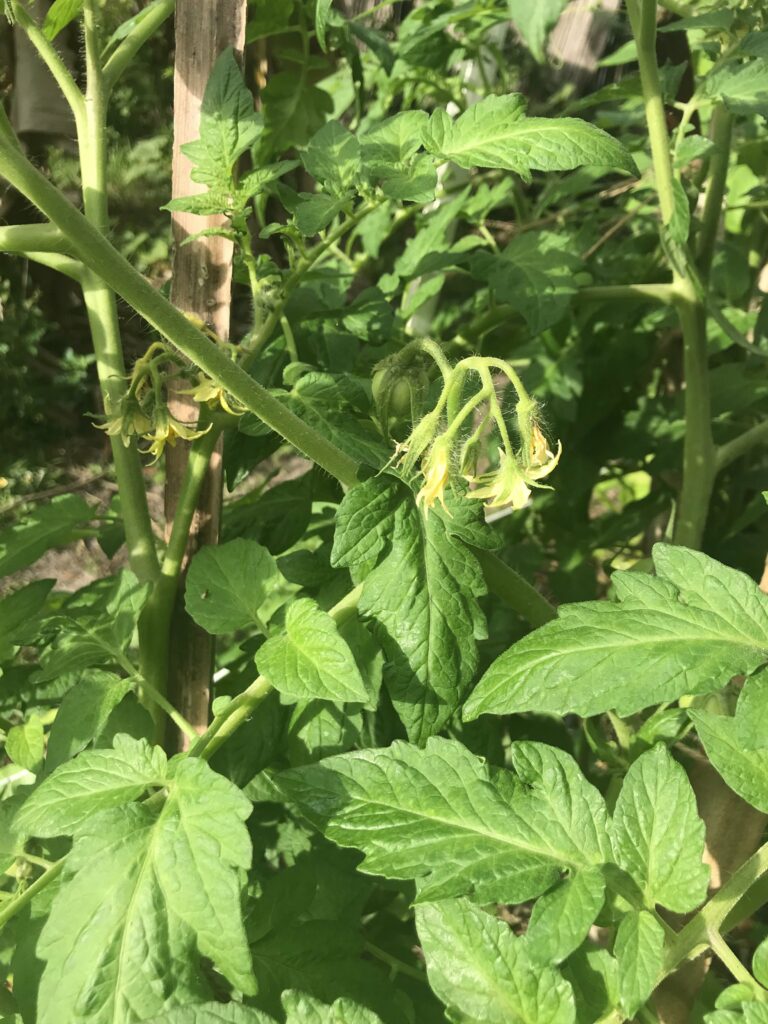
Prepared for the Glut
It’s January now. This means that I’ll spend the next two months catering to tomato plants. I’ll get tons of fruit that I will then need to rush to harvest green in the face of every threatened cold snap.
We’ll have piles of half-green tomatoes all over the kitchen counter. Then, after my good intentions to puree, cook, strain, and freeze them become broken promises, I’ll chuck them into the freezer in plastic bags to deal with later.
But I’m ready. After all, there has to be some reward after all these months. Perhaps instead of saying I have a “love-hate” relationship with tomatoes, I should turn that around. I have a hate-love relationship with tomatoes. Because the hate really comes first.
I hate standing in the hot sun through September and October to prune them. I hate the constant and seemingly futile spraying of fungal preventatives only to be met by a plague of insects instead. I hate standing out in the bitter wind at midnight after a last-minute frost warning, trying to save them with old sheets. Especially when, comes the hour, the temperature turns out to be 10 degrees warmer than predicted.
But I love the fresh taste of homegrown tomatoes.
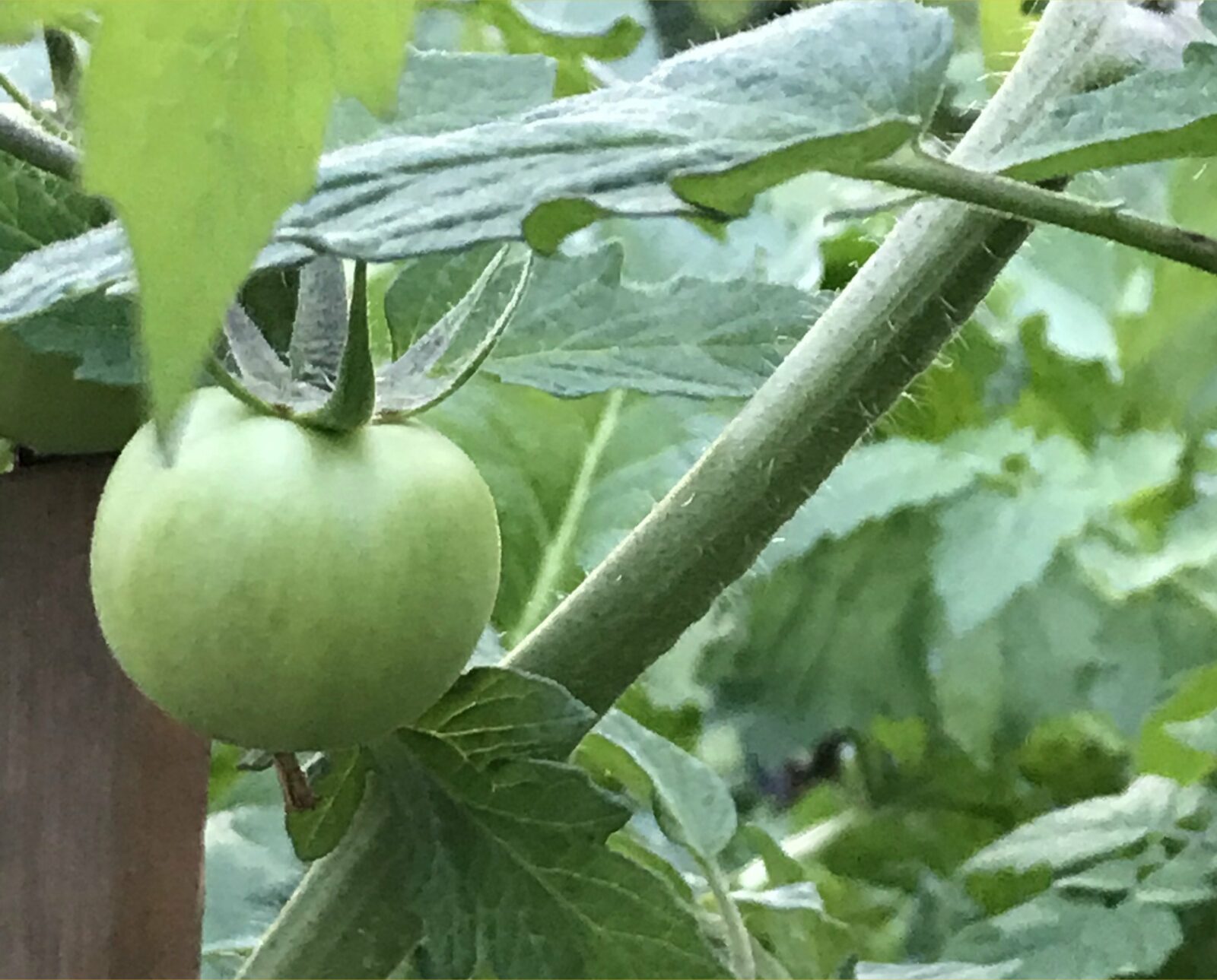
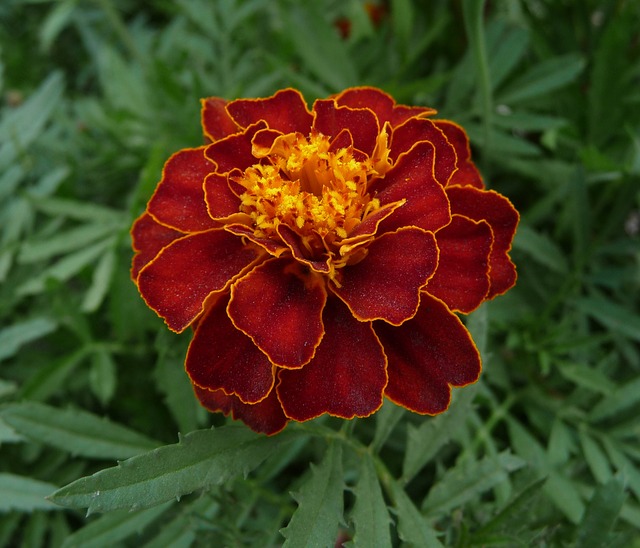
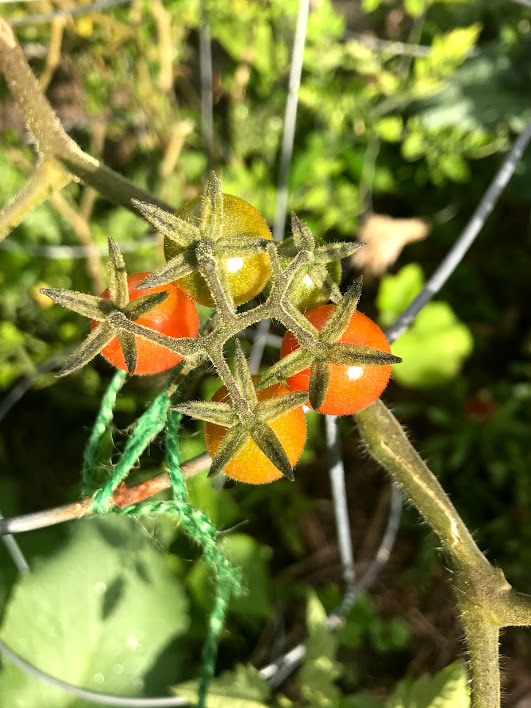
1 thought on “My Love-Hate Relationship: Growing Tomatoes in Florida”
Comments are closed.